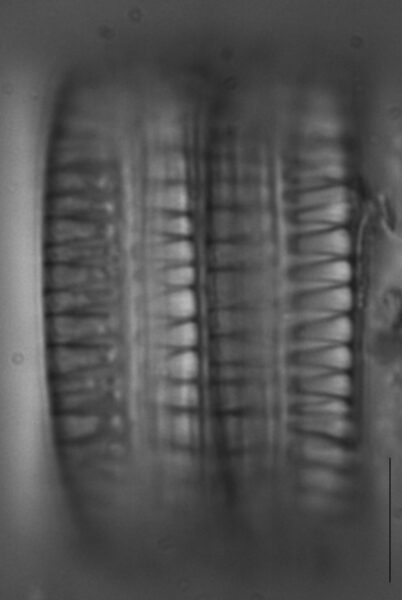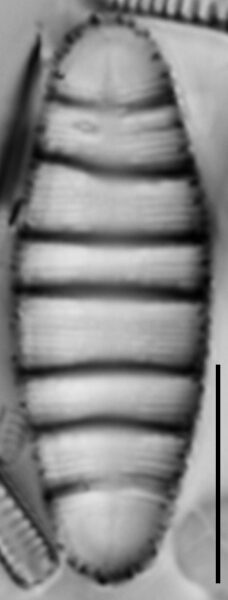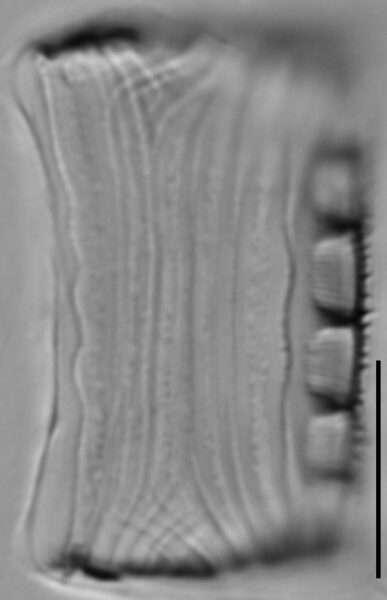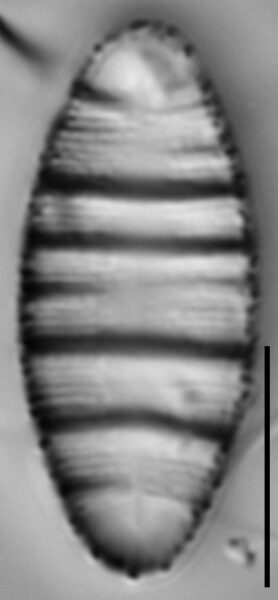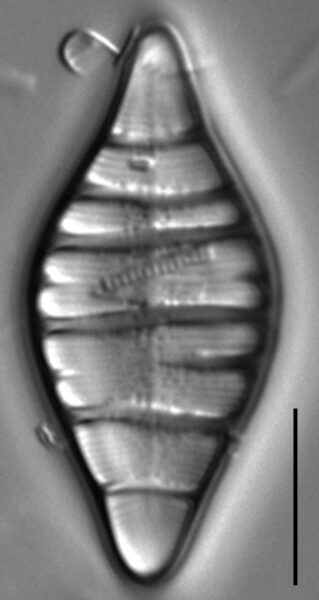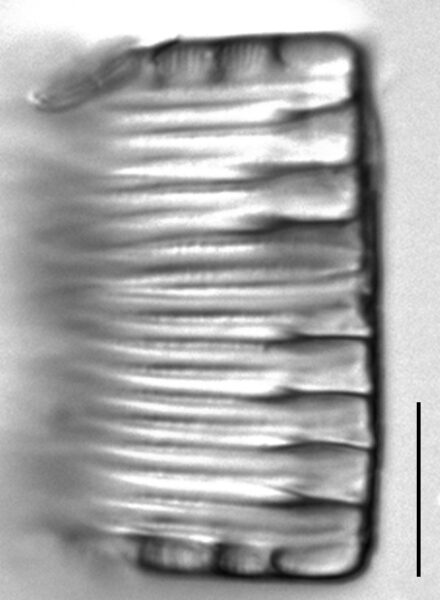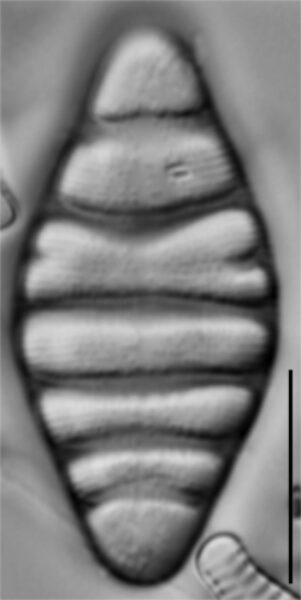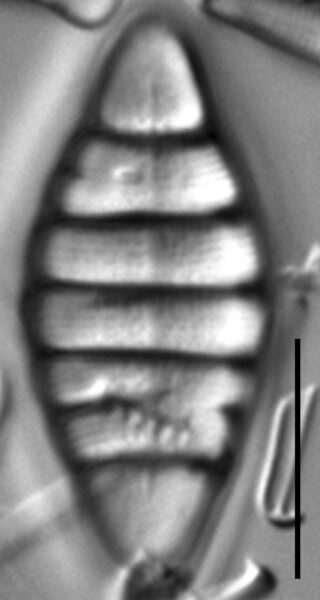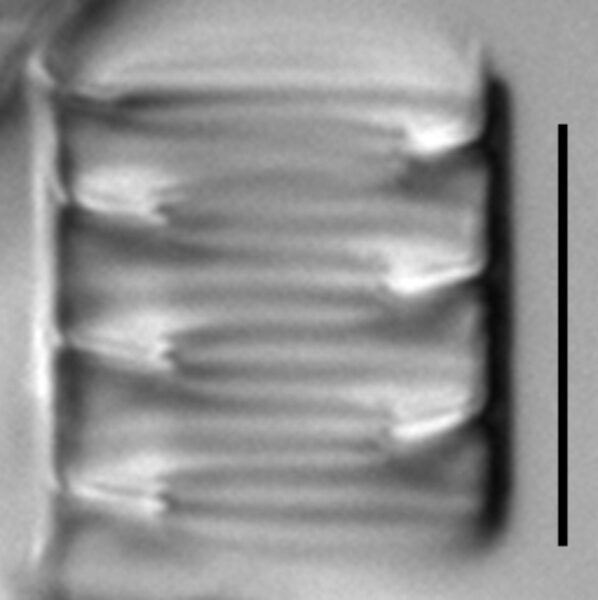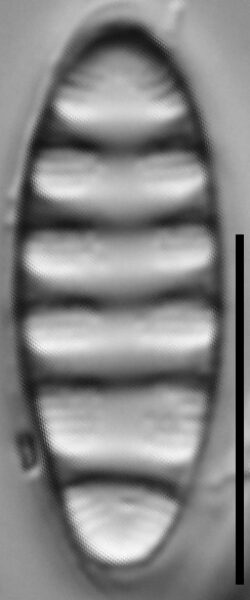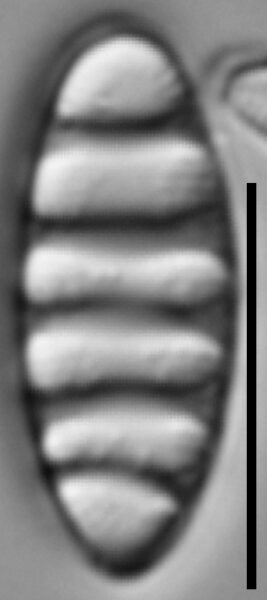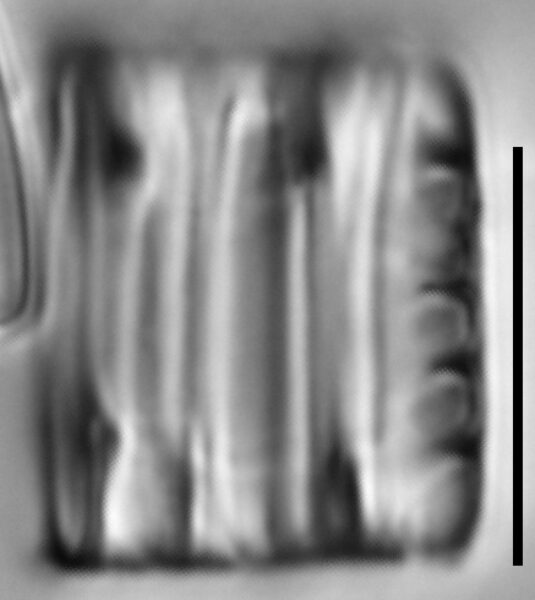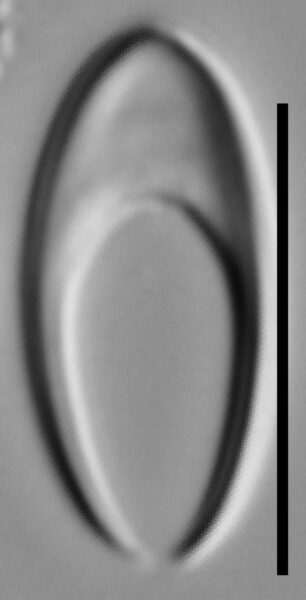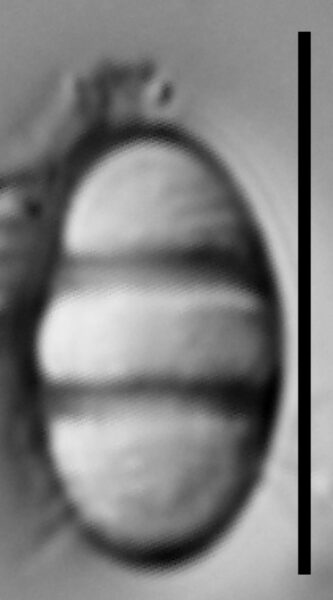Compare Odontidium mesodon
Compare
Diatoma vulgaris is more elliptic with a greater density of striae and costae. Odontidium hyemale is larger and more linear. Tetracyclus hinziae is septate and the ends are more apiculate in larger valves. Tetracyclus rupestris is septate and has a broad axial area. Small valves of T. rupestris and O. mesodon are quite similar, occupy the same habitats and have frequently been confused with one another.
LM scalebar = 10 µm
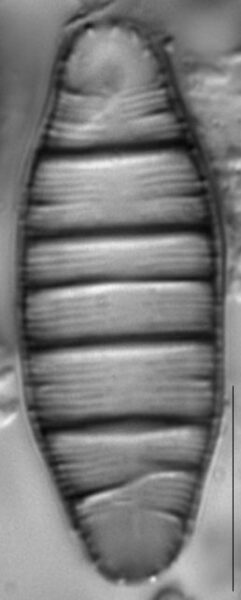
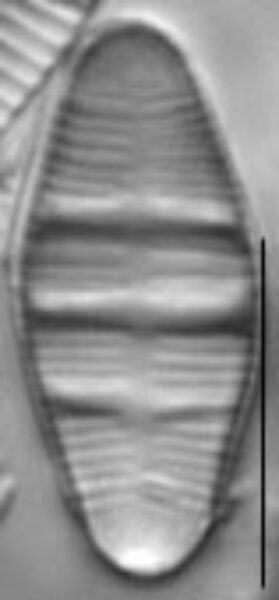
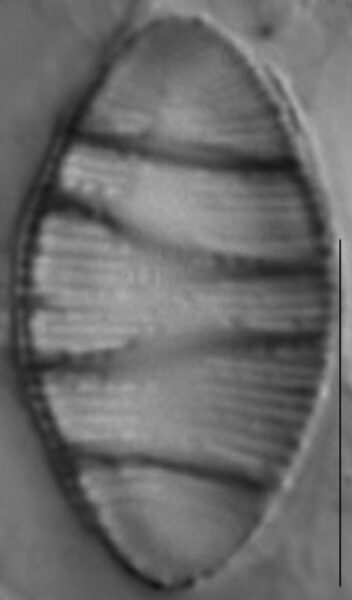
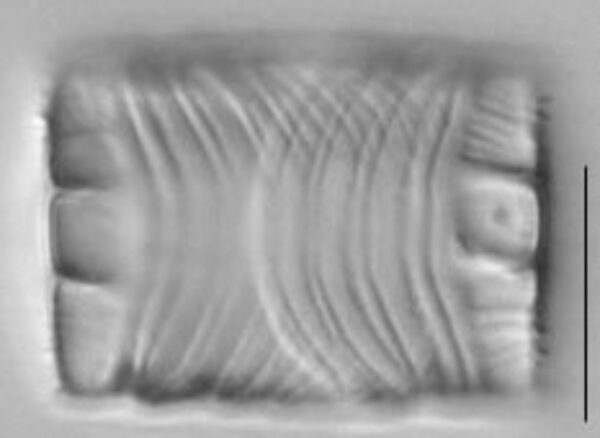


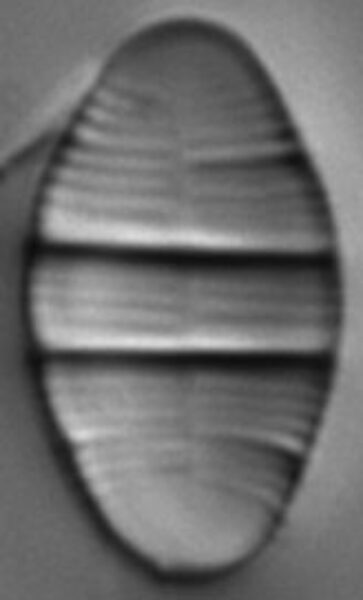
Length Range
10–40 µm
10–40 µm
Width Range
6–12 µm
6–12 µm
Striae in 10 µm
25-35
25-35
 Diatoms of North America
Diatoms of North America
